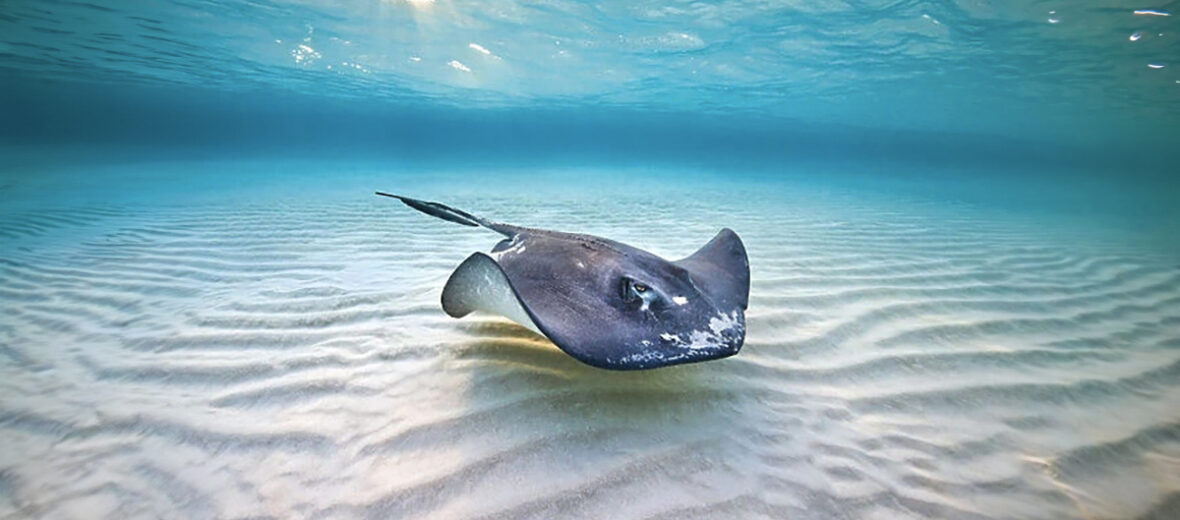
The southern stingray is a species of whiptail stingray that inhabits the warmer waters of New Jersey south to Brazil. These rays are generally peaceful and docile creatures, but they can get the point across, if threatened. Due to overfishing and frequent disturbances from recreational activities, these creatures are listed as Near Threatened by the IUCN. Their populations are also decreasing.
First the Stats…
Scientific name: Hypanus americanus
Weight: Up to 214 lbs.
Length (disc width): Up to 59 inches
Lifespan: Up to 17 years
Now on to the Facts!
1.) Southern stingrays are nocturnal (active at night).
2.) While searching for prey in the sandy substrate, they will spray water from their mouths and also flap their fins to disturb the sand and reveal a potential meal.
3.) They often times swim along the tide, as there is typically a greater abundance of food available.
4.) Typically found singly or in pairs, these critters can also be spotted in large shoals. It is thought that they shoal in order to provide protection from predators.
5.) Smaller fishes, worms, crustaceans, and bivalves are all on the menu.
But wait, there’s more on the southern stingray!
6.) Great hammerhead sharks often prey on these rays.
7.) The serrated barb on their tail is covered in a venomous mucus and is utilized in self defense.
Did you know…?
The spine is not fatal to humans, but causes immense pain if stepped on!
8.) They are ovoviviparous (fertilized eggs develop inside the mother’s body).
9.) Females undergo up to an 8 month gestation (pregnancy) that yields up to 10 young.
10.) Their primary means of communication is via pheromone signaling (pheromones are chemicals acting like hormones outside the body).
But wait, there’s still more on the southern stingray!
11.) Like most all sharks, these rays also possess Ampullae of Lorenzini that are typically heavily concentrated around the head. This gives them the ability to sense specific electrical fields which are produced from hidden prey.
12.) They can also sense minute vibrations in the water which aid them in finding prey.
13.) There are many tourist attractions in places like Grand Cayman, Cayman Islands, and Antigua where “feeding stations” have been set up to allow tourists a chance at hand feeding these creatures. However, this behavior may have an untold impact on the ray’s ecology and behavior in the wild.
14.) The best way to avoid stepping on them at the beach is to shuffle your feet in the sand, while in the water. This way you alert them to your presence and they will scurry off rather than sting you.
Now a Short Southern Stingray Video!
Be sure to share & comment below! Also, check out the Critter Science YouTube channel. Videos added regularly!
Want to suggest a critter for me to write about? Let me know here.
Some source material acquired from: Wikipedia & IUCN
Photo credit: Nature Picture Library



